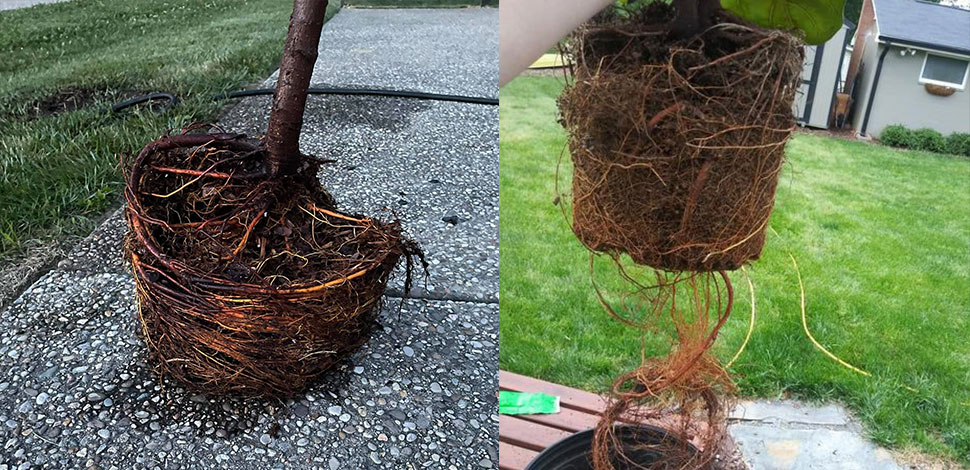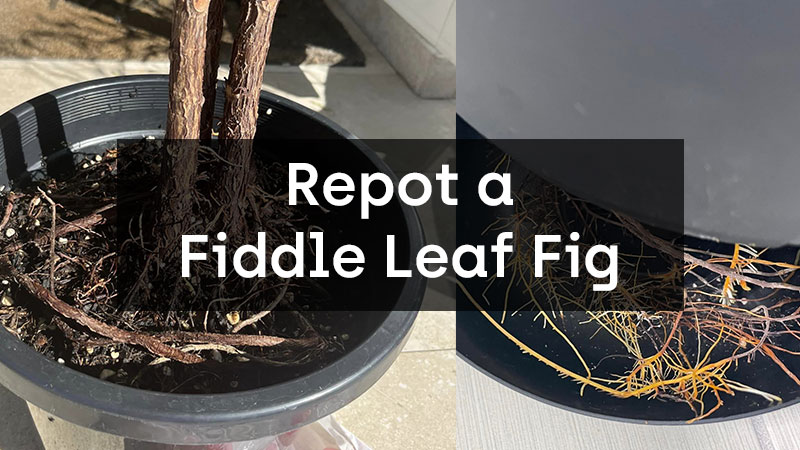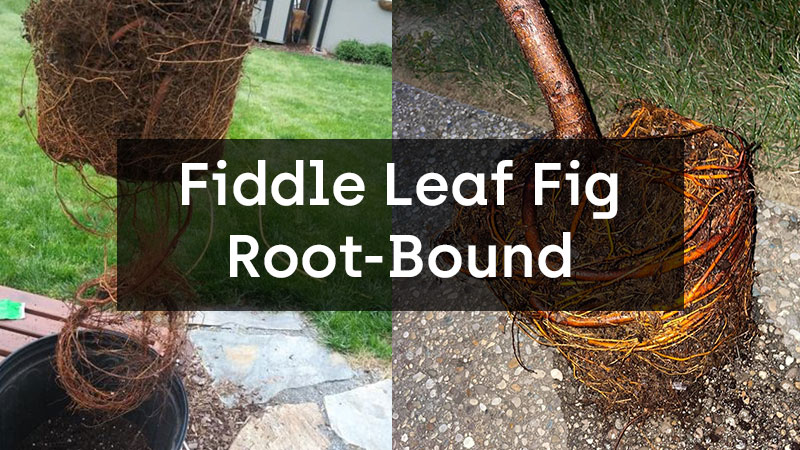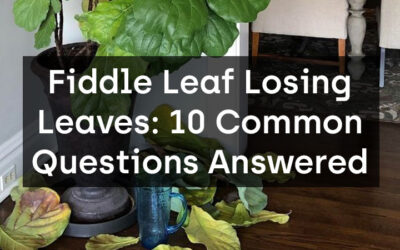Fiddle leaf figs (Ficus lyrata) have become incredibly popular as indoor plants due to their large, glossy leaves and elegant presence. However, these tropical plants can face various challenges in a home environment, including the issue of being root-bound. When a fiddle leaf fig becomes root-bound, its growth and overall health can be negatively affected. In this article, we will explore why fiddles don’t like to be root-bound and discuss the signs of a root-bound fiddle leaf fig. We will also provide step-by-step instructions on how to fix a root-bound fiddle leaf fig and offer essential aftercare tips to ensure the plant thrives.
Why Fiddles Don’t Like to Be Root-Bound
Fiddle leaf figs, like many other plants, rely on a healthy root system for proper nutrient and water absorption. When a fiddle leaf fig becomes root-bound, its roots are confined to a limited space, which restricts their ability to access the necessary resources. This can lead to malnourishment and dehydration, resulting in a weakened plant. Additionally, being root-bound hampers the root system’s growth and development, preventing it from spreading and establishing a strong foundation. Ultimately, these factors contribute to poor plant health and can manifest in stunted growth, yellowing leaves, and overall decline.
Fiddle Leaf Fig Root-Bound Signs
- Roots growing in a circle: One of the most noticeable signs of a root-bound fiddle leaf fig is the presence of roots growing in a circular pattern. When the roots are confined to a small space, they start circling around the pot instead of spreading outwards.
- Roots growing out of the drainage holes: Another clear indication of a root-bound fiddle leaf fig is when roots begin to emerge from the drainage holes at the bottom of the pot. This signifies that the root system has outgrown its current container.
- Stunted growth: If you notice that your fiddle leaf fig’s growth has slowed down significantly and the leaves appear smaller than usual, it could be a result of being root-bound. The restricted root system fails to support the plant’s normal growth, resulting in diminished overall size.

How to Fix a Root-Bound Fiddle Leaf Fig
Unpot your fiddle and loosen the roots:
To address a root-bound fiddle leaf fig, you will need to carefully remove the plant from its pot. Gently lay the plant on its side and tap the bottom of the pot to loosen it. Once loose, slowly lift the plant out of the pot, supporting the base of the stem. Avoid pulling or tugging on the plant, as it may cause damage. Once the fiddle leaf fig is out of the pot, use your fingers or a tool to gently untangle and loosen the roots. Be patient and take your time to avoid causing unnecessary harm to the plant.
Repot the fiddle leaf fig:
After the roots have been loosened, it’s time to repot the fiddle leaf fig into a larger container. Choose a pot that is approximately 2 inches larger in diameter than the previous one to allow room for the roots to grow. Ensure the new pot has drainage holes to prevent waterlogging. Select a well-draining potting soil mix specifically formulated for indoor plants. Place a layer of soil at the bottom of the new pot, then carefully position the fiddle leaf fig in the center, making sure it is upright. Fill the remaining space with soil, gently pressing it down around the roots to provide stability. Water the plant thoroughly after repotting to settle the soil and hydrate the root system.

Read more How to Repot a Fiddle Leaf Fig
Aftercare
Proper aftercare is crucial for a root-bound fiddle leaf fig’s recovery and long-term health:
- Watering: Water your fiddle leaf fig thoroughly but allow the soil to dry out partially between watering sessions. Overwatering can lead to root rot, while underwatering can stress the plant.
- Light exposure: Fiddle leaf figs thrive in bright, indirect light. Place your plant near a window with filtered sunlight or use artificial grow lights to provide sufficient illumination.
- Temperature: These plants prefer temperatures between 60°F and 75°F (15°C – 24°C). Avoid exposing them to extreme cold or hot drafts.
- Fertilization: Feed your fiddle leaf fig with a balanced, water-soluble fertilizer specifically designed for houseplants. Follow the instructions on the product label for the correct dosage and frequency.
Conclusion
Addressing a root-bound fiddle leaf fig is essential for maintaining its health and promoting optimal growth. By understanding the reasons why fiddles don’t like to be root-bound and recognizing the signs of a root-bound plant, you can take proactive steps to remedy the situation. Unpotting the fiddle leaf fig, loosening the roots, and repotting it in a larger container with well-draining soil are crucial for providing the root system with the space it needs to flourish. Remember to follow proper aftercare guidelines, including watering, light exposure, temperature, and fertilization, to ensure the continued well-being of your fiddle leaf fig.
FAQs
1. How often should I repot my fiddle leaf fig?
It’s generally recommended to repot your fiddle leaf fig every 1 to 2 years or when you observe signs of being root-bound, such as roots growing out of the drainage holes or stunted growth.
2. Can I reuse the same potting soil when repotting my root-bound fiddle leaf fig?
It’s best to use fresh potting soil when repotting your fiddle leaf fig to provide it with a nutrient-rich environment. Reusing the same soil may not provide adequate nourishment for the plant.
3. What is the best time of year to repot a fiddle leaf fig?
Spring is an ideal time to repot a fiddle leaf fig as it enters its active growing season. The plant will have ample time to recover and adjust to its new container during this period.
4. How long does it take for a repotted fiddle leaf fig to recover?
The recovery time can vary depending on the plant’s condition, but typically it takes a few weeks to a couple of months for a repotted fiddle leaf fig to recover and start showing signs of new growth.
5. Are there any specific signs to look for to determine if my fiddle leaf fig is root-bound?
Yes, there are several signs to look out for, including roots growing in a circular pattern, roots emerging from the drainage holes, and stunted growth with smaller leaves compared to its usual size. These signs indicate a root-bound fiddle leaf fig that requires attention.







0 Comments